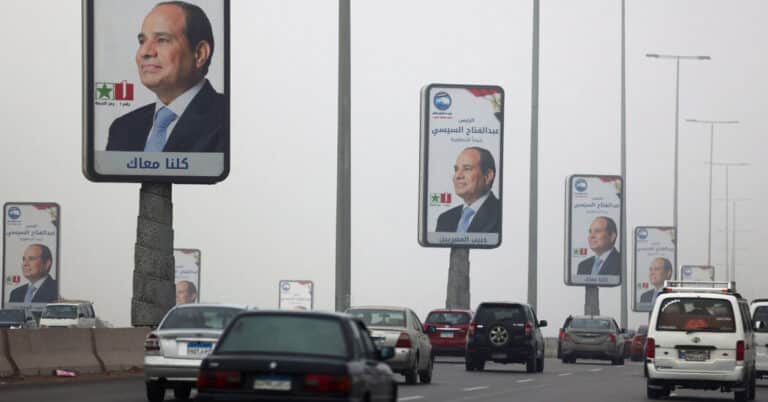Israel launched a series of airstrikes in Gaza on Saturday, resulting in numerous casualties and overwhelming hospitals, as reported by health authorities in the region. These attacks came just a day after the United States used its veto power to block a U.N. Security Council resolution that called for an immediate cease-fire.
Some of the targets of the airstrikes were located in the southern Gaza Strip, an area where Israeli military officials had instructed civilians to seek refuge in order to avoid the bombardment. This highlights the sobering reality that there is no safe place for people in Gaza to find shelter.
Videos released by Reuters from the city of Khan Younis in the south showed buildings engulfed in flames following Israeli strikes. Local media showcased footage of rescuers and civilians using their hands, flashlights, and cellphones to extract individuals from the rubble. Other images depicted patients receiving treatment on blood-stained hospital floors.
On Wednesday, U.N. Secretary-General António Guterres invoked a rarely used rule that allows him to bring matters that “may threaten the maintenance of international peace and security” to the attention of the Security Council. Mr. Guterres argued that a cease-fire was necessary due to the suffering of ordinary Palestinians in Gaza and the potential for the humanitarian crisis there to pose a threat to global stability.
This led to the Security Council vote on Friday regarding the resolution for an immediate cease-fire, which the United States vetoed, asserting that Israel has the right to defend itself against Hamas. Israel initiated its military offensive in Gaza following an attack by Hamas, the armed group controlling the enclave, on October 7, resulting in the deaths of 1,200 people and the hostage-taking of 240 individuals according to Israeli authorities.
Israel’s two-month-long aerial and ground assault on the besieged Gaza Strip has claimed the lives of at least 15,000 people, and possibly many more, according to the Gaza health ministry. Palestinian leaders and Arab nations argue that the Israeli military campaign is a grossly disproportionate response to the events of October 7.
The United States’ veto of the cease-fire resolution has left many Gazans who were hopeful that the airstrikes and their suffering would cease in shock. The day before the Security Council vote on the cease-fire, the Biden administration, Israel’s closest ally, had begun expressing concerns that the Israeli military had not done enough to prevent harm to Gaza’s civilian population.
“People were optimistic that the war might end,” said Muhammad al-Masri, a local journalist residing in the town of Rafah in southern Gaza. “In the past few days, we believed that America would intervene and impose a deadline on ending the war,” he added. “But it turned out to be the opposite. It was the one opposing the cease-fire.”
Mr. al-Masri now resides in a makeshift tent encampment that has been flooded by winter rains, further compromising the limited shelter available to people. He reported that on Saturday, Israel “fired two rockets near the shelter where we are staying, resulting in many deaths and injuries.”
The Israeli military did not respond to requests for comment regarding reports of targeting Rafah after advising Gaza civilians to seek refuge there.
Ahmed al-Qayed, a 31-year-old carpenter, expressed his hopes that the U.N. would find a resolution to the conflict so that he and his family could return to their home in Gaza City in the northern part of the territory.
Similar to thousands of other displaced individuals, Mr. al-Qayed, his wife, and their children have been living in a dilapidated tent in Rafah, where basic necessities such as access to a bathroom are often unavailable.
“Tell America that we want to go back to our homes,” he pleaded. “What is our guilt? We are exhausted and sick.”
He stated that Gaza is experiencing shortages of everything, including food and blankets. Like hundreds of thousands of others, they have been forced to rely on canned food, some of which is expired, and have not eaten any fresh fruits or vegetables for several weeks. He also mentioned that he lacks the funds to purchase firewood and spends his days collecting branches and twigs to keep his family warm.
Abdullah al-Nems, a 41-year-old taxi driver in Rafah, revealed that he has ceased working due to the scarcity of fuel in Gaza and the constant fear associated with leaving his home amidst frequent Israeli airstrikes.
Even within the confines of his home, he and his family live in constant fear of bombs and missiles that have decimated entire neighborhoods and, at times, claimed the lives of entire families in a single strike, according to Gaza residents and authorities.
“My life is pure horror,” Mr. al-Nems remarked. “Why should my son and daughter live in fear all day? Why should I remain terrified even within the confines of my own home?”
The war has displaced approximately 85% of Gaza’s population, which consists of over 2 million Palestinians. Most individuals have sought shelter in tent encampments, overcrowded schools, and other public buildings. With the arrival of winter, the situation has become increasingly bleak, according to accounts from Gazans.
U.N. officials are grappling with the challenge of delivering essential goods like food, medicine, and cooking gas to desperate civilians.
“People are talking about how the U.N. hasn’t even distributed any edible items to those taking shelter in schools,” said Mohammed Aborjela, a 27-year-old project coordinator with the development organization Youth Without Borders. “The United Nations cannot compel Israel to take any action.”
Mr. Aborjela used to document daily life and culture in Gaza on his Instagram account before the war. While he previously shared videos of seaside cuisine in Gaza, he now posts about the daily struggle to find drinking water and food.
“People were hopeful that the war would end within a few days,” he said. “Now everyone is wondering whether it will conclude before the year is over.”
Rawan Sheikh Ahmad contributed reporting.


